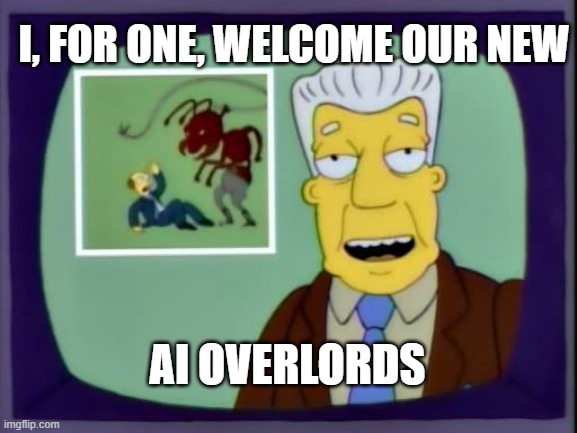Embracing Our AI Overlords: getting started
This is part 2 of creating a homepage in 2025. This will probably become a series so buckle up. If you missed part 1 you can find it here.
When I first used ChatGPT I was mindblown.
As an electronic engineer who nearly cried after lighting his first LED with a battery, seeing a chatbot answer questions with real proficiency felt like living in the future.
Fast-forward to 2025: AI feels less like a curiosity and more like Skynet with better branding and eager to take everyone's jobs. I love emerging technologies (I was even a Principal Engineer in Emerging Technologies for a while) But this one comes with a catch.
The catch? You have to pay a subscription. And not a cheap one if you are a dev. But like all disruptive tech, it pays to be on the bleeding edge, even if it bleeds your wallet.
In the face of this “impending doom for my credit card”, I need to become proficient with these tools and fold them into my workflow. I don't think AI is going to be a silver bullet, but getting a hang of what can be done with it and its limits, will definitely give me an edge in this new order.
At this point I feel like channelling Kent Brockman:
“I, for one, welcome our new AI overlords, and I’m happy to help round up others to toil in their underground sugar caves.”

I’m working on my webpage, and it felt like the perfect chance to test GitHub Copilot. I had wanted to try Cursor or Kiro, but I forgot to cancel the auto-renewal and got locked in for another year... yay!
Word of caution: Copilot’s paid tier works on a credit system. Each request consumes credits depending on the model (from 1x to 10x), but autocompletes are basically free. If you’re only using Copilot for code suggestions, the free tier is enough. Don’t waste $100 like I did.
To be honest, one of the main reasons I'm writing this post is because I want to squeeze as much as possible that subscription, and make up for that $100 mistake.
I was afraid that I would get locked with a single model if I used Copilot. Fortunately, new updates introduced access to different models, so working with it should be fine. After reading some docs (yes, I still read docs) and watching a few YouTube videos, I felt ready to start prompting my way into the future.
Some useful resources, mostly from Microsoft, but I think they are ok to get started.
- Get started with GitHub Copilot in VS Code. Take a look at the
create custom instructionssection, it has some great tips.- Master the core principles of prompt engineering with GitHub Copilot
- Set up GitHub Copilot in VS Code
With the AI overlord chosen and tribute paid, I made sure VSCode was updated and followed the setup guide... straightforward enough.
My objective is to use AI to help me build features for my website, and, if possible, get some pointers on pros/cons of how to use AI and also make the most out of it. I thought of two very common features I wanted to implement in my webpage: A blog and a projects showcase page.
That should be pretty common and easy, right?
I had a plan, and now it was time to get my hands dirty. I launched VSCode, created a new branch and with my expectations high in the sky, I started prompting... reality plummeted me back to earth, but that disaster deserves its own post. See you in part 3. Bye!
Next up: My First Vibe Coding Experiment: an optimistic approach